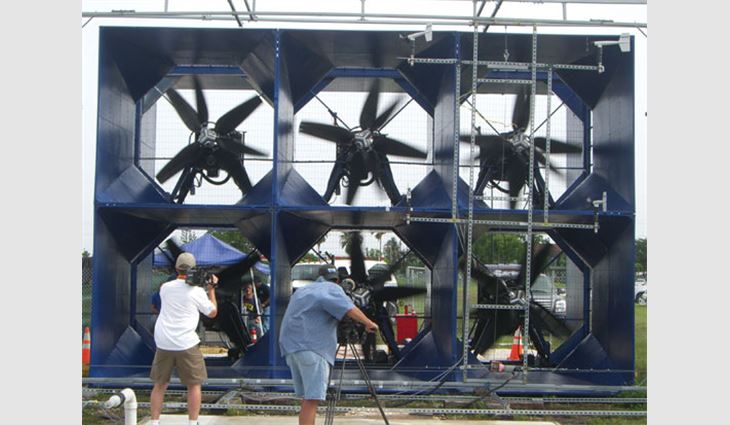 Photo courtesy of Florida International University, Miami
Photo courtesy of Florida International University, Miami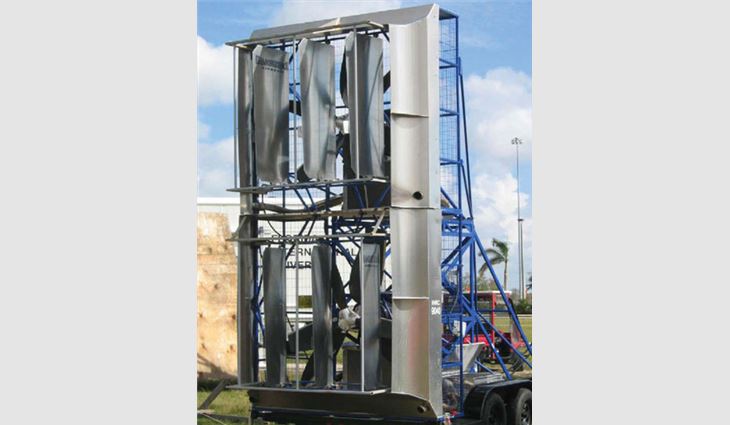 Photo courtesy of Florida International University, Miami
Photo courtesy of Florida International University, Miami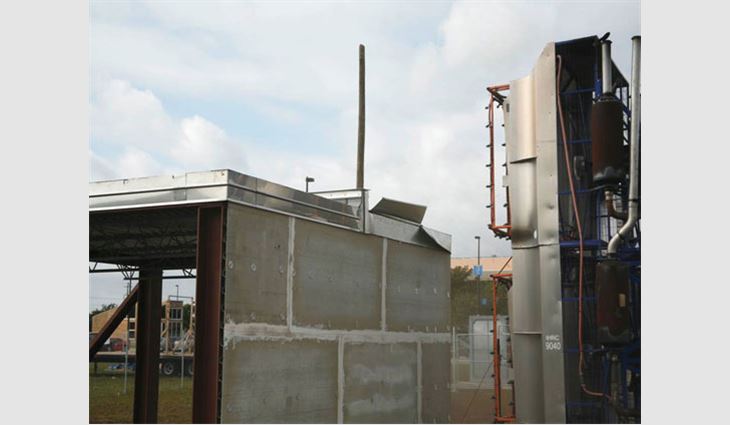 Photo courtesy of Florida International University, Miami
Photo courtesy of Florida International University, Miami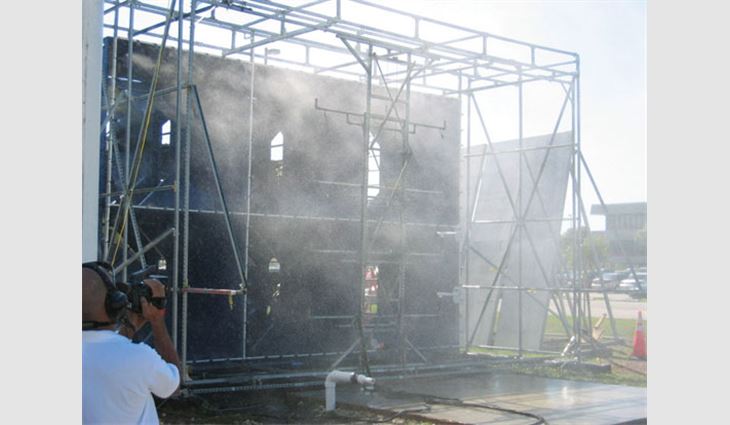 Photo courtesy of Florida International University, Miami
Photo courtesy of Florida International University, Miami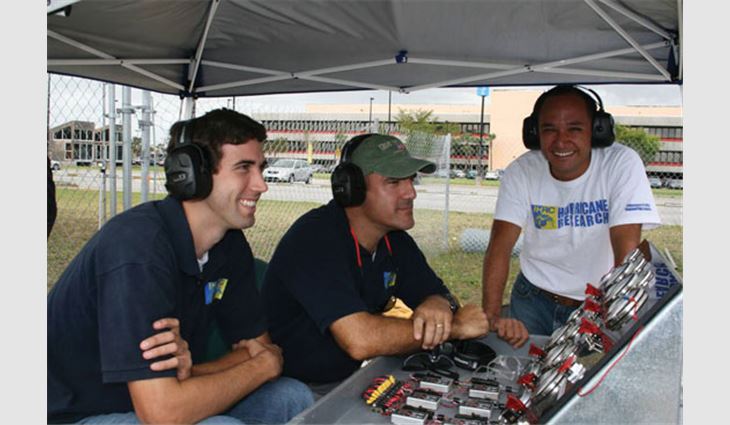 Photo courtesy of Florida International University, Miami
Photo courtesy of Florida International University, Miami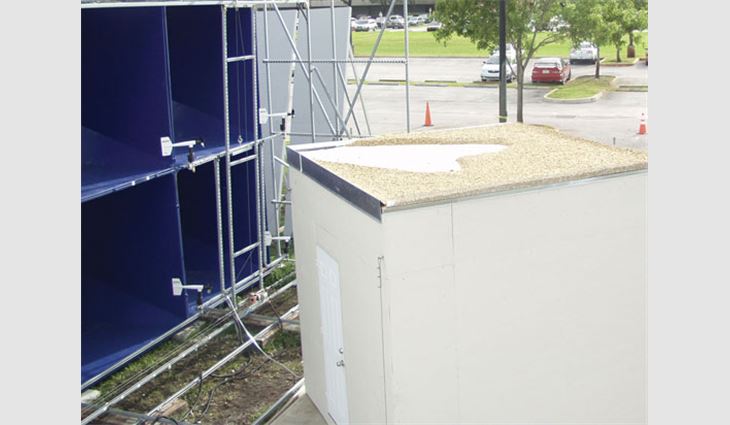 Photo courtesy of Florida International University, Miami
Photo courtesy of Florida International University, Miami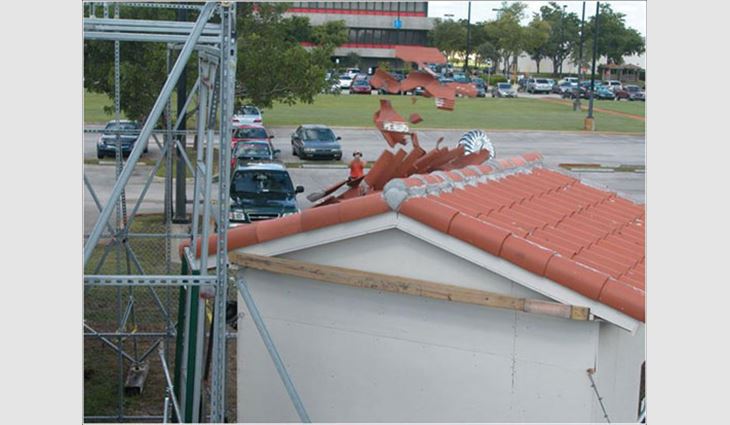 Photo courtesy of Florida International University, Miami
Photo courtesy of Florida International University, MiamiAs we all know, the U.S. Gulf and East coasts are vulnerable to hurricanes. Hurricane-induced economic losses have increased steadily in the U.S. during the past 50 years with estimated annual losses (in constant 2006 dollars) averaging $1.3 billion from 1949-89, $10.1 billion from 1990-95 and $35.8 billion per year during 2001-05, according to the National Science Board, which oversees and establishes policies for the National Science Foundation within the framework of policies set forth by the president and Congress.
Recent hurricane activity, especially the New Orleans disaster in the wake of Hurricane Katrina, has focused public attention on our vulnerability to hurricanes. The devastation caused by recent hurricanes demonstrates the need for mitigation tools that can significantly reduce losses.
A solution
To address these problems, current research at Florida International University (FIU) in Miami is enabling full-scale testing of entire structures, leading to performance-based design for hurricanes through direct correlation of wind speed with performance and damage levels.
To perform hurricane mitigation research, the wind engineering team at FIU's International Hurricane Research Center (IHRC) has built its full-scale Wall of Wind (WoW) facility sponsored by
RenaissanceRe Holdings Ltd., Pembroke, Bermuda. The WoW is viewed as being potentially as effective for wind engineering as crash testing has been for the automobile industry. The WoW facility can test to failure full-sized structures, such as site-built or manufactured housing, and small commercial structures.
Current WoW projects, funded by federal and state agencies and private industry, including The Roofing Industry Alliance for Progress, are providing urgently needed hurricane engineering research and education to quantify and communicate hurricane risks and losses; mitigate hurricanes' effects on the built environment; and enhance sustainability of infrastructure and business enterprise, including residential buildings, low-rise commercial buildings, power lines, traffic signals, etc.
The synthesis inherent in WoW research will create a sound scientific basis for developing risk- and performance-based design criteria and contribute to the attainment of a national objective: achieving more sustainable coastal communities.
Mitigating losses
Past hurricanes have shredded public trust in the safety and resiliency of the built environment. According to the National Science Board, the growth of hurricane-induced losses from $1.3 billion per year pre-1990 to $35.8 billion per year post-2000 is a result of more than 50 years of accumulated decisions to invest in physical infrastructure and community development on the seaboard where 50 percent of the U.S. population lives within 30 miles of the coastline.
The economic viability of the coastal states following major storm impact depends on hurricane mitigation. FIU is strategically committed to hurricane engineering research as an important part of its mission.
The current research at IHRC will allow—for the first time—conduction of full-scale, destructive testing of houses and low-rise commercial buildings exposed to hurricane-force winds, wind-driven rain and flying debris impact. Full-scale testing, performance-based evaluation and failure-mode analysis will lead to the development of innovative mitigation technologies.
What WoW can do
IHRC brings 10 years of experience leading multi-university hurricane research. Its WoW is capable of:
The prototype two-fan mobile WoW generates up to 120-mph winds with a water-injection system simulating horizontal wind-driven rain. Destructive testing has been performed on light commercial roof systems, barrel tile roofs, soffits, hurricane-mitigation products, Florida Power & Light utilities, and a Miami house slated for demolition.
FIU has now built a larger six-fan WoW that can generate winds up to 130 mph and sufficient wind field size to engulf a single-story residence. The WoW is housed in a 100- by 80- by 35-foot building. AIR Worldwide Corp., Boston, funded the construction of a turntable of directional wind, wind-driven rain and rapid directional change effects on full-scale buildings.
How it works
The accuracy of WoW testing depends on the generation of a wind field with mean and turbulence characteristics reasonably similar to those of real hurricanes. As a member of the Florida Coastal Monitoring Program, IHRC's team has access to high-resolution surface wind data collected during many hurricanes.
The data are analyzed to estimate wind characteristic parameters and their variability from storm to storm. The parameters are being used to simulate hurricane-fluctuating wind in the full-scale testing facility through the use of active and passive control devices (such as independently computer-controlled fans and/or flaps, screens, etc.), ensuring test flow conditions are close to those occurring in various actual wind storms.
The WoW, which can simulate wind-driven rain, is a perfect tool to develop new product designs to reduce water damage caused by future hurricanes. The WoW testing in conjunction with debris-propelling devices will help to study the initiation and impacts of flying debris on test models. This will provide the capability to simulate the behavior of wind-borne debris generated by hurricane winds and study its effects on the built environment.
Recent studies of wind-borne debris present numerical modeling of debris trajectories and comparison with experimental data. These results apply to wind-borne debris occurring in severe windstorms, such as hurricanes, and will be used for WoW debris generation and testing.
Ongoing research
FIU's WoW currently is used for several projects sponsored by the Florida Department of Community Affairs; Florida Sea Grant College Program; Gulf of Mexico Regional Sea Grant Program; National Science Foundation; The Roofing Industry Alliance for Progress; University of Central Florida (UCF), Orlando; WeatherPredict Consulting Inc., Raleigh, N.C.; and others. The WoW research is enabling full-scale testing of entire structures leading to performance-based design for hurricanes.
For example, in the study Hurricane Loss Reduction for Housing in Florida: Rooftop Equipment Wind Loads and Damage Mitigation, funded by the Florida Department of Community Affairs, ooftop equipment consisting of condensers, exhaust hoods, HVAC units and communications equipment is subjected to wind loads that must be resisted by anchorage connections.
Damage reconnaissance conducted after the 2004 and 2005 hurricane seasons noted widespread rooftop equipment failures, secondary water infiltration and debris generation caused by dislodged rooftop units. The WoW research will develop mitigation techniques that will use wind screens and dampers to reduce the wind loading on mechanical rooftop equipment and the forces transferred to roof-supporting structures.
Another study, Mitigation of Roof Uplift through Vortex Suppression Techniques sponsored by WeatherPredict Consulting, seeks to validate the effectiveness of modified roof edge geometry in the reduction of high-suction pressures at roof corner and edge regions through full-scale testing.
The first experiment for this study consisted of gravel scour testing on low-slope roof systems. The WoW test focused on visualizing conical vortices formation at a roof corner subjected to hurricane-level winds as indicated by the pattern of gravel scouring. The next set of tests will involve measuring pressure time history for flat, gable, hip and monoslope roofs with and without the application of vortex-mitigation techniques to evaluate the techniques' effectiveness in reducing suction pressures.
UCF is sponsoring Testing of Green Roof Systems. FIU will be testing UCF's green roof system construction using the WoW. There will be a series of 15 tests conducted at various wind speeds using various wind netting and polymer applications. The newly established vegetation will be tested initially. Vegetation will be given two to three months to establish roots. Then, the established vegetation will be tested at different wind speeds.
Hurricane Wind Simulation and Testing to Develop Damage Mitigation Techniques, funded by the National Science Foundation, will test residential buildings' roof-to-wall connections and secondary water infiltration during hurricanes. Past studies have shown hardware-type connections can lead to failure modes affecting building safety. This research will simulate hurricane-induced effects and perform full-scale WoW experiments and testing to determine the inherent weaknesses of components when subjected to wind, rain and debris.
Through full-scale testing under simulated hurricane conditions and performance-based engineering, an innovative, cost-effective, light, strong, ductile and nonintrusive roof-to-wall connection will be developed to strengthen new and existing residential buildings against hurricanes.
Florida Sea Grant is sponsoring Full-Scale Simulation of Hurricane Effects on Residential Building Envelopes to Reduce Hurricane-Induced Losses. For this study, IHRC's research team aims to develop an innovative integrated research-application-outreach methodology to address a major issue: building envelope failure during hurricane events. The project objectives are to:
The study Development of Innovative Load Transfer Mechanism to Reduce Hurricane-Induced Failures in New and Existing Residential Construction funded by the Gulf of Mexico Regional Sea Grant Program involves single-family dwellings.
In general, poor performance of residential buildings has been observed when they did not respond as units because of discontinuous load paths. Common practices that led to loss of integrity include insufficient or poorly detailed intercomponent connections (roof to wall, wall to foundation, etc). Common failure modes were identified as follows:
The research will significantly advance knowledge about residential construction-related hurricane-structure interaction through hybrid testing involving multi-university facilities at FIU and Louisiana State University (LSU), Baton Rouge.
The team will develop, test and validate an innovative continuous-load path system from roof to walls and walls to foundations. For the testing and validation, the team will use the six-fan WoW at FIU; LSU's wind-tunnel testing to compare with full-scale tests; LSU's debris-generation capability to help model a debris field; and performance-based engineering and design.
Reducing damage
Applying the mitigation technologies that can be produced from the WoW research will result in significant reductions of hurricane-induced losses in coastal states, contributing to their enhanced economic resilience and competitiveness.
The WoW research activities and findings will have important and sometimes immediate economic and social effects in the coastal states, and the findings may extend to inland states. Forging a strategic alliance with insurers, local jurisdictions and trade associations will lay a research-to-application pipeline for expeditious technology transfer, commercialization and a broad range of benefits to society.
Arindam Gan Chowdhury, Ph.D., is IHRC's director of the laboratory for wind engineering research and an FIU assistant professor.
COMMENTS
Be the first to comment. Please log in to leave a comment.